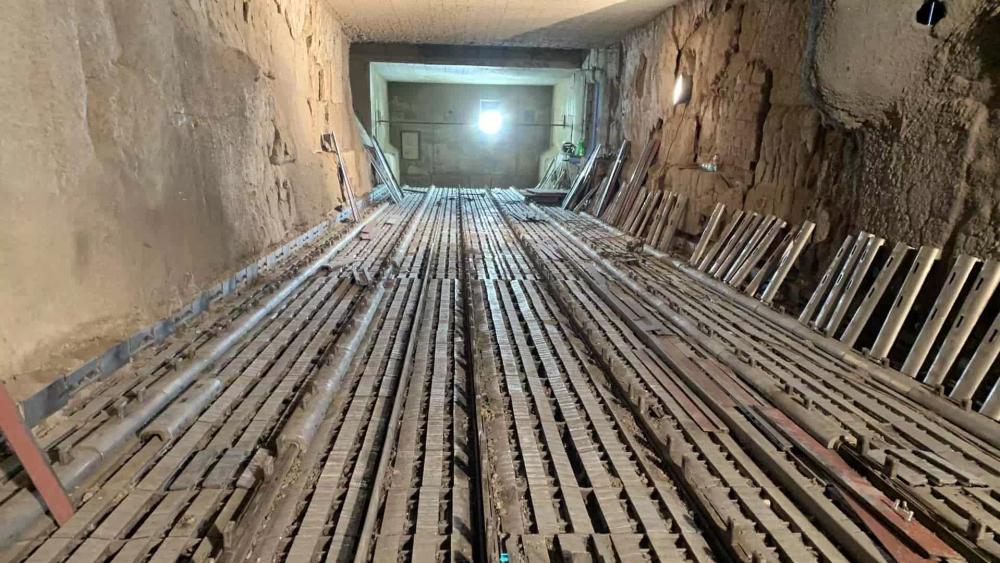article
Improved maintenance and energy efficiency for the SF™ and the Multi-Movable™ Cross-Bar® coolers
Cement plant operators around the world know the importance of keeping maintenance time and costs to a minimum, while running at maximum efficiency. Plants with the SF™ and the Multi-Movable™ Cross-Bar® coolers can now use a new type of grate that reduces power consumption and simplifies maintenance.
The big impacts of a simple change
Can a fairly straightforward design change to a cooler grate significantly reduce power consumption?
The researchers and developers at the Dania R&D centre in Mariager, Denmark say ‘Yes’ – and there are other benefits, too.
Niels Ole Cedergaard, Development Engineer, at Dania R&D, the world’s largest research facility for cement-production technology, explains the rationale behind the new type of grate for the SF™ and the Multi-Movable™ Cross-Bar® coolers and how it works:
NIELS OLE CEDERGAARD - Development Engineer, Dania R&D
The new Wave Grate provides significant benefits:
- Reduced power consumption
- Potential for higher efficiency
- Easy cleaning and maintenance
- Increased grate wear lifetime
- Fast and simple installation
Reduced pressure drop means significant power savings
Reducing pressure drop is the key to using less power. Compared to older grates, the reduced airflow resistance through the new Wave Grate reduces the pressure drop and subsequently the power consumption of the cooler fans, helping you operate the coolers more efficiently.
As Sujay Thangaraj, Product Line Manager for the Clinker cooler, explains:
SUJAY THANGARAJ - Product Line Manager for the clinker cooler, FLSmidth Cement
More efficient heat recuperation
Many plants are stretching the cooler beyond its designed capacity and want to increase efficiency. Rather than using the reduced pressure drop to save power, you could instead increase the cooling airflow in a heavily loaded cooler, giving you the potential to increase heat recuperation efficiency and reduce clinker exit temperature.

Wave Grate during installation in SF™ Cross-Bar® cooler
Streamlined and less-costly maintenance
While designing the new grate, the engineers also realised that it would be an advantage to improve access to the grates. “We know that one issue with the original grate is that it is in one piece. It’s difficult to take apart for maintenance and time-consuming to clean if clogged with fine clinker dust particles,” says Niels Ole Cedergaard.
The engineers realised that the solution was a two-piece grate design. The revised two-piece design makes it simple to remove the upper part of the grate, allowing you to easily clean inside it as needed. To change the upper Wave Grate, you access the bolts from above the cooler grate line – a clear advantage compared to the older grate design, which requires access from both the top and bottom.
The wear strips installed on the upper Wave Grate further improve its longevity. Not only does upper part of the Wave Grate have an expected lifetime of more than five years, it is also the only wear part that you’ll ever have to replace, significantly reducing maintenance costs.
“It makes sense that customers only eventually have to replace the worn part of the grate, not the entire unit,” says Niels Ole Cedergaard.
The following table compares the original LEG grate with the new Wave Grate:
Fast return on investment
Niels Ole Cedergaard has been pleased to see the new grate design in operation at a cement plant in Egypt. “The grates looked in excellent condition. Even after eight months in use, they looked brand new. The customer was very satisfied.”
Overall, the benefits of the new Wave Grate assure you a return on investment in less than one year compared to the older type of grates. The reduction in pressure drop saves power, while the increased airflow gives you greater potential for efficiency, and the ease of access allows you to perform maintenance tasks more easily. Furthermore, the maintenance costs are significantly reduced as you only ever need to replace the upper Wave Grate – all adding up to a straightforward investment decision for customers with SF™ Cross-Bar® coolers.
Want to know more?
CONTINUE LEARNING ABOUT THE GRATE FOR THE SF™ AND THE MULTI-MOVABLE™ CROSS-BAR® COOLERS

_and_Multi-Movable_Cross-Bar_coolers.png?w=3840&q=80&auto=format)

.jpg?w=1080&q=80&auto=format)

